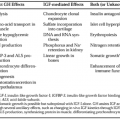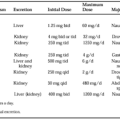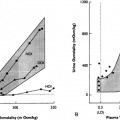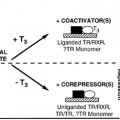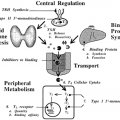RHYTHMS IN THE SOMATOTROPIC AXIS
Part of “CHAPTER 6 – ENDOCRINE RHYTHMS“
In normal subjects, the 24-hour profile of plasma GH consists of stable low levels abruptly interrupted by bursts of secretion (see Fig. 6-2, Fig. 6-5, Fig. 6-6 and Fig. 6-7). The most reproducible secretory pulse occurs shortly after sleep onset, in association with the first phase of SW sleep.31 Other secretory pulses may occur in later sleep and during wakefulness in the absence of any identifiable stimulus. In women, daytime GH pulses are more frequent than in men, and the sleep-associated pulse, although still present, does not generally account for most of the 24-hour GH release. The secretory profile is less regular in women than in men.32 Circulating estradiol concentrations play an important role in determining overall levels of spontaneous GH secretion.33 Sleep onset elicits a pulse in GH secretion whether sleep is advanced, delayed, interrupted, or fragmented. Delta wave electroencephalographic activity consistently precedes the elevation in plasma GH levels. While SW sleep is clearly a major determinant of the 24-hour profile of GH secretion in humans, there is also evidence for the existence of a circadian modulation of the occurrence and height of GH pulses, reflecting decreased somatostatin inhibition in the evening and nocturnal hours.34 Administration of a specific GHRH antagonist results in a near total suppression of sleep-related GH release, indicating an important role for GHRH in the control of nocturnal GH secretion.35
Stay updated, free articles. Join our Telegram channel

Full access? Get Clinical Tree


